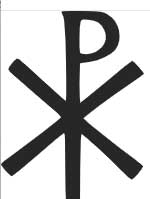The first to hijack Christianity was the Emperor Constantine, who used Christianity to unite the Roman Empire under his control. Carrying the Chi Rho symbol, the first two letters of “Christ” in Greek, his soldiers prevailed against Maxentiius at the Battle of the Milvian Bridge of 312 AD.

Constantine invited the “bishops” of the day to the Council of Nicaea in 325 AD and doted over the many abused leaders of the underground churches who had suffered injuries. While still a pagan, he led the church until his death in 337 AD when he finally accepted baptism. Constantine had commissioned the building of fifty-eight institutional churches by the time he died.
The “German Evangelical Christian Church”
Fast forward to Germany between 1930-1945, which makes an excellent case study on how government policy can hijack the institutional church. Like most major shifts in public policy, this one took place through a succession of baby steps to avoid major public protest as it managed to install as “Christian” a new spirituality invented by a government and get get the church leaders and the public to embrace it.
The first step of the process of hijacking the German institutional church can be traced to 1921 when The German Church–Sunday Paper for the German Volk began to appear. It had the objective of ridding the German church of the Old Testament and re-interpreting the heroic sacrifice of Jesus on the cross along the lines of German mysticism. Clergy in the state churches were elected, and by the 1930s the Nazi party worked to install its own candidates. Church parties like “The Church Union for Positive Christianity and German Nationality” and “The Evangelical National Socialists” were formed. Hitler began to unite these parties into the “Faith Movement of German Christians” in 1932, led by Joachim Hossenfelder who liked to call it “The Storm Troops of Jesus Christ.” In actuality, the church was encouraged to view Adolph Hitler as the one that God had raised for the salvation of the German nation. Faith was based on the “Spirit of Luther” and was to have a heroic piety. Sanctification was defined as keeping Germany “racially pure,” and was to be a duty of the church.
When the new church leaders had their first meeting, they responded with enthusiastic “Heils” to the words of the brown-shirted Dean Grell, who expressed the need for a German faith and a German God. Eventually, even words like “Amen” and “Hallelujah” would be eliminated from the liturgy because of their Jewish etymology.
Many of Germany’s world famous theologians sided with this national church movement, perhaps out of fear of losing their posts in the universities. After Hitler seized power, he heavily promoted the party church and denied other candidates access to the media. As the movement gathered momentum, hoards of people who had previously had no interest in the church began to flood the sanctuaries.
The re-imaging of the German Christian Church would not, of course, remove all traces of true Christianity from the land. Certain opposing pastors continued to preach courageously, Reich officers carefully monitoring their services, which few dared to attend.

The Barmen Declaration
The biggest protest was organized by the German-Swiss Theologian Karl Barth (pronounced “Bart”), who lost his professorship at the University in Bonn because he refused to sign the required oath that put Hitler above Jesus. He later drafted the “Barmen Declaration” and engineered a meeting in May of 1934 of 139 delegates from 18 churches who signed the document. The Declaration would infuriate Hitler but, in the event, had little actual effect. Here are a summary of the points that the Declaration condemned as “false doctrine”:
- That the church would proclaim anything other than material rooted in Scripture (Jn. 14:6).
- That Christians could have any other Lord than Jesus Christ (1 Cor. 1:30).
- That the church would take a role in the “currently reigning ideological and political” message (Eph. 4:15-16).
- That the church would yield to control by secular powers (Mt. 20:25-26).
- That the church would fulfil the state’s objectives or be an organ of the state (1 Pet. 2:17).
- That the church would follow the desires, purposes, and plans that originated from any source other than the Lord Jesus (Mt. 28:20).
In short, Barmen said, “No führer but Jesus.”
Barmen was also an example of a confessional document–a writing that expresses what the writers believe, rather than a creed that attempts to state what ought to be believed. While Barmen was not the product of a house church movement, all the important documents of house church history have been confessions, not creeds.
Conclusion
Church history reveals countless stories where the church is persecuted, but there are also many instances where it has been hijacked, especially by governments who oppose the works of the followers of Christ. Even in the Old Testament, prophets of God were abused or killed for being mouthpieces for God.
For these reasons, it is no wonder that house churches are often suspicious of government interferance in their affairs, many refusing any offers of funding for their Christian works..
Ahlers, R. “The Barmen Theological Declaration of 1934.” Toronto Studies in Theology, v. 34, Lewiston: The Edwin Mellen Press, 39-42. Bax, D. S. “The Barmen Theological Declaration: Its Historical background.” Journal of Theology for Southern Africa. Busch, E. Karl Barth: His Life from Letters and Autobiographical Texts. Grand Rapids: Eerdmans, 1976, 216-247. Durnbaugh, D. F. The Believers’ Church. Scottdale: Herald Press, 1968, 177-191.
Leave a Reply